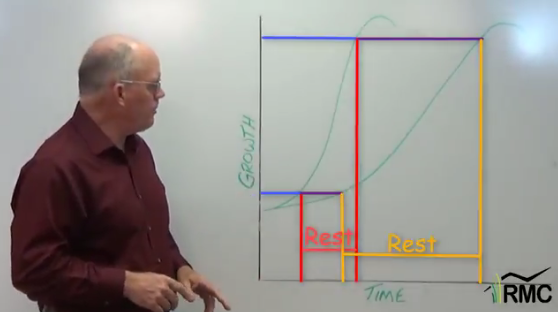

I always like to start an electric fence conversation with this statement: “Electric fence is not a Miracle.” Quite frequently it is a miracle that it ever works when installed by uninformed consumers. There are certain principles that must be used and challenges overcome to use the product successfully. Over the next several months I will be submitting articles to “On Pasture” that deal with issues that people face when they decide to use electric fence. Just for the record it does not matter where you live or where you use this product from a global standpoint. Electric fence works the same in all climates and situations. It’s just that the user must determine what that climate and situation involves and adjust accordingly.
Why should I train my animals first?
For those who are thinking about using electric fence for the first time there are some things to understand before jumping into the “fire.” First, electric fence is not a physical barrier. Simply put, this means that the conductor is not strong enough to keep an animal from breaking out (or in). Most electric fence conductors (the wires that carry the electrical charge) have less than 450 pounds of breaking strength. Compare this to barbwire at 70,000 or high tensile at 170,000 and greater. The power of electric fence is, for the most part, psychological.
 Until your animals, livestock or wildlife, understand what electric fence is, it’s normal for them to hit the fence and break out. They need to learn, or as most would say, be “trained” to respect it. Training is simple. It generally only takes touching the fence one or two times and the animals understand just what the shock means. Your job is to help them touch the fence.
Until your animals, livestock or wildlife, understand what electric fence is, it’s normal for them to hit the fence and break out. They need to learn, or as most would say, be “trained” to respect it. Training is simple. It generally only takes touching the fence one or two times and the animals understand just what the shock means. Your job is to help them touch the fence.
Let’s say you’re using a portable/poly type product. Before the grazing season starts, use it to split a holding corral or pasture that livestock are currently being held in. Run the wire(s) across the pasture or corral leaving one end open about 16-20 feet and if possible make this opening close to water and put all the animals on the pasture side. This will make the animals travel from the pasture or feed ground to get water. As they head to water, they will follow the fence line and touch the wire. If the wire is torn down, simply put it back up and continue the training for around 24 hours or longer if possible. Once you find that the wire is intact and standing it would be reasonable to say your initial training session is complete.
If you’re using high tensile wire, you can make a permanent holding pen with preferably 3-5 strands of high tensile electrified wires. The selling point of this concept is that new animals can be contained in this holding pen for a quick training period without a lot of effort building a temporary fence.
Here’s an example of bison learning about electric fence.
Wildlife can learn to respect electric fence too, but since it is impossible to fence them like you do livestock. The standard method is to install the fence at least a week before bringing the livestock to the pasture. Once the fence is installed, be patient and monitor it during the week, to repairing any damage should wildlife run through it. Once they have touched the wire and been shocked they generally begin to crawl under or jump over the fence or just avoid the area as you can see in the video:




We have a few young beef cattle that we (at least try to ) rotational graze on 32 acres in central Florida. They range in weight from about 300 to 750 pounds. They are extremely docile, literally eating out of your hand. Originally, and successfully, we used electric netting for their portable fencing, then more recently changed to polywire looking to a more time efficient fencing option. Fence construction time is now about 10% of what it was with the electric netting. However, after about 3 weeks of use (and the first 3 paddocks), we could not keep the stock inside. We are quite sandy and it was getting dry, so we changed from “ground” grounding to a hot and ground wire. This gives us over 7,000 volts, whereas the in ground setup provided about 4,000. Still, we put the cattle in the paddock, and they stay there, respecting the fencing, until we leave. We come back the next day, and they are all out. Consistently. With all fencing perfectly intact. Wire heights are about 36 and 26 inches. Forage quality and quantity is high both within and outside the paddocks.
Any advice you can provide on keeping these animals fenced in would be greatly appreciated. Thank you & God bless.
Thank you for the article and the very instructive video clips. cg
I believe that animals should be exposed to both high tensile electric wire and poly wire products when training. Most cattle and horses learn to respect electric fence rapidly when they have contact with it. I recommend a voltage level of 3000 to 6000 volts. Poly wire is the front line in rotational grazing situations. Livestock need to realize that poly wire is the boundary.
Comments are closed.